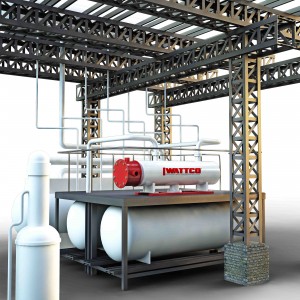Heating and Storing Asphalt Using Electric Heaters
Last updated on April 4th, 2024 at 05:58 pm
 The role of industrial process heaters, for example, circulation heaters, has been a very important factor with regards to the storing and transportation of asphalt. We will be exploring the importance and the different ways in which industry professionals store and transport asphalt.
The role of industrial process heaters, for example, circulation heaters, has been a very important factor with regards to the storing and transportation of asphalt. We will be exploring the importance and the different ways in which industry professionals store and transport asphalt.
Heating Systems
There are two primary types of heating systems used in the asphalt industry. The first of the two is the fuel heating system, and the second is the electrical heating system. They are both extremely different and require careful handling to ensure operations run smoothly. The fuel heating system has been used for many years and is heavily reliant on diesel and gasoline. They use fire and extreme heat to produce results and maintain asphalt temperature.
Fuel oriented heating systems find it difficult to accurately judge the temperature of asphalt, and the time in which it takes to heat the asphalt can be much longer than anticipated. There are also some concerns regarding the environment. Fuel oriented heating methods use up a lot of fossil fuels, which in turn release harmful emission substances that are dangerous for the environment. As you can see there are various problems regarding this method of asphalt heating.
The use of electrical heating systems, much like circulation heating, allows for industry professionals to complete the same job without compromising the environment and the precious fuels that we have left. They make use of high powered electric heaters that produce the same amount of heat that is required to heat asphalt appropriately. The best part about using an electric circulation heater is that they can heat asphalt at a consistent rate. That means they are extremely accurate, much more so than fossil fuel heaters which have trouble controlling heat temperature.
Checking the temperature drop of the asphalt is where the majority of problems occur. With an electric heater, this task is completed with the help of a sensor that is attached to the control panel. As temperatures drop the sensor notifies the control panel, which then starts the electric heaters accordingly.
Direct vs Indirect Heating
Another major difference between the two kinds of heating systems is the way they go about the actual heating process. Industrial process heating with electric heaters typically uses direct heating methods. The heating elements come in contact with the product and directly heat it. This ensures that there is little or no heat loss since most of the heat produced is directly added to the product itself.
The benefit of having an electric heater is that they can heat product much quicker than traditional fuel oriented heaters. Another major difference between the two heating systems is the way in which they go about heating the asphalt. Electric heaters use direct heating methods, which means once the heating elements come in contact with the product they will begin heating it. This is a significant improvement from the old way of doing things.
Direct Fired Tanks
The emphasis on the environment and the safety of vehicles that transport bitumen, the use of electric heaters on the direct fired tanks is normal. The use of electric heaters and the insulation of the tank mean that the tank has high thermal efficiency. Direct fired tanks are ideal for keeping heat within the product. These tanks attach directly to the electric heater.
Let’s talk about direct fired tanks, which are important heating systems. They are typically used when the storage heating requirements are inadequate, the asphalt needs to be heated before use, or when the distance to transport the asphalt is more than the amount of time needed to keep heat intact. The use of direct fired tanks is best for small asphalt plants. The need for industrial process heating in these plants will not be in high demand since there may be one or two storage tanks for asphalt.
Directed Fire Tank Considerations
Despi te having a plethora of advantages, some of them are ideal for larger PMAC plants. The larger the plant, the greater the need for heating. In addition, there is a need for the heater to be able to heat other subsidiary products that complete the assortment of asphalt. Heating other components is a task almost impossible for direct fired tanks. They can only do so with the help of multiple scavenger heating coils or booster heaters.
te having a plethora of advantages, some of them are ideal for larger PMAC plants. The larger the plant, the greater the need for heating. In addition, there is a need for the heater to be able to heat other subsidiary products that complete the assortment of asphalt. Heating other components is a task almost impossible for direct fired tanks. They can only do so with the help of multiple scavenger heating coils or booster heaters.
Another disadvantage of the direct fired tanks that make use of burners is that there is very little space for the heat to affect the asphalt. This means that the recovery rate of temperature in these heaters is 1 to 3 degrees Fahrenheit per hour. Accordingly direct fired tanks, circulation heaters have a larger surface area to heat. The heating element is immersed in the asphalt allowing for thorough heating from within without heat loss.
If you’re looking to purchase a direct fired tank you must first take into consideration that these heaters are better for temperature maintenance rather than temperature increase in bitumen products. Temperature increase is a job that is best left to large storage containers that have powerful electric heaters with strong heating elements attached to them. In a direct fired tank, both the place of heating, the method of heating being used and the amount of asphalt that can be heated will all be inadequate.
The Best Asphalt Industry Heating Features:
Circulation Heaters
- Thermal insulated vessels
- Special wattages, sizes and materials are available where necessary
- Units are available with larger vessels and heavier flanges
- Can be supplied with stainless steel parts and special design terminal boxes for heat protection
- Custom unit sizes
- Standard sizes: 1.25” NPT Screw Plug size to 14” diameter
- Steel or stainless vessels fitted with 150 lb./300 lbs/ 600lbs/ 2000 lbs. psi flanges
- Custom-designed to meet specifications
- Use in high temperature conditions
- Compact, clean and durable
- Insulated upon request
- Installation of the product is easier
- Energy efficient
- Provide fast response and even heat distribution
- Easy mounting support
- Suitable to general purpose terminal enclosures, NEMA 7, NEMA 4X NEMA 7, and unsafe or explosion proof locations
- Reduces heat loss from the vessel
- Provide maximum dielectric strength
- Compatible with standard industry piping and safety standards
- Protects and prevents from thermal insulation
- Provide greater wattage in a smaller heater bundle
- Designed and built for safety
- Works in conjunction with control panels
Immersion Heaters
- The heaters have standard 1-inch openings of conduit
- Custom-designed to meet your specifications.
- The elements can be of a variety of diameters, such as 0.375”, 0.475”, 0.315” and 0.430”
- Special sizes, wattage are available upon request CSA and UL approved
- Lightweight and durable
- Sheath materials:
- Steel riser made up of stainless steel
- Steel riser made from stainless high quality steel
- All models are moisture proof
- No new holes need to be drilled
- Portable heater which makes it easy to remove and easier to install
- Low and fast maintenance
- Operation from 1 to 3 phase
- Optimum levels of heat transfer
- Designed for safety
- Uniformity in Temperature
- Able to withstand the effects of moisture
- Resistant from the effects of corrosion and Oxidation
Pipe Heaters
- Single element ratings: 4-20 kW
- Quick heat up time & easily replaceable
- Outside diameters: 1 7/8’’ and 2 ¾’’
- Lengths: 60-320’’ (5-26 ft)
- Pipe Surface: 3-12 W/In2
- Equipped with high-density electrical ceramic insulating supports
- Voltages: 240, 480 and 600V, 3 PHASE
- Used in horizontal 2’’ or 3’’ schedule 40 NPS pipe
- Special ratings and lengths available upon request
- Can be bent in a vertical plane on at least 12’’ radius
- Easy installation
- Very flexible
- Heavy gauge bus bars
- Heavy gauge resistance wiring
- Long service life
- Uniform heat distribution
- Equipped with a continuous support bar that ensures proper rigidity
Boiler Heaters
- Moisture and contaminant resistant
- Available special sizes, wattages, and materials upon request
- Heating units are designed in a way that meets your industrial needs.
- Maintenance is easier
- Easy to install and energy efficient
- Replacement Boiler Flange Heaters – TYPE FL
- Square or round steel flange types
- Broad variety of sizes for different applications
Conclusion
It is fair to say that the asphalt industry is of great importance to the infrastructure of each country around the world. Electric heaters are a staple in this industry and continue to create safe work environments that are much more efficient. The heating industry continues to make major adjustments in technology that allow industry professionals to excel in their trades and therefore, produce higher quality products.
